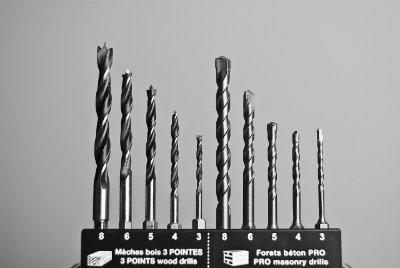A Pneumatic nailer is an expensive investment. It is, therefore crucial to take proper care of one. Taking good care of it ensures you get quality service and you use it for a longer period without having to purchase another. Take a look at these tips that will prolong the life of your pneumatic nailer.
Five Ways To Care For A Pneumatic Nailer
Avoid Dirty Or Moist Air Exposure
On exposure, the airborne particles will clog the pneumatic nailer and cause undue wear to components within the device. In regions with high moisture content in the air, it’s important to avoid prolonged exposure. Invest in an air-tight box or case for storage when not in use. The same applies to areas that have a lot of dust or sand in the air, mainly exterior job sites.
Use Lubrication
Make sure the tool is lubricated at all times. Remember that pneumatic nailers require special lubricant, labelled as pneumatic tool oil. Many generic oils eat through rubber over time, which will cause more harm than help in the long run. Make sure pneumatic nailers, staplers, and other fastening tools receive regular lubrication. Even with a self-oiling valve design, it’s important to keep watch that your pneumatic nailer is receiving the proper amount of lubrication. It’s advisable to put two to three drops of pneumatic tool oil directly into the coupling joint before connecting the air hose. Do so daily at the start and finish of use, at the beginning to provide lubrication, and at the end to resist rust. Read our previous blogs about lubrication here.
Avoid Using The Wrong Fasteners
Using wrong screws will cause poor performance and premature wearing of parts, although this is more common with staples than with the nailers. Make sure both the gun listing and the fastener listing are compatible. Also make sure you keep the delivery end of nailers clean as it reduces jamming, a constant but necessary task with asphalt in a roofing nailer.
Match Hose To Pressure
A 1/4-inch hose is light and easy to use, but take a look at how minute the passage is in the interior of the connector. If you are required to use more than 50 feet of hose, it is best to use a 3/8-inch hose on the compressor and then the lighter 1/4-inch on the tool. If you use long hoses or many tubes frequently, you should probably consider investing in high volume connectors whose interior diameter is the same as the hose. High-Volume connectors or shorter hoses will give you a better way to the power of the compressor tank. If your compressor is big enough, that means smooth and steady nailing.
Match Your Compressor Pressure To The Tool Specs
Although many nailers can take 120 lbs. of force, for some this much pressure will slowly destroy the anvil. Some nailers allow high pressure through the compressor by providing depth adjustment at the nailer’s head, but when the pressure gets low, nails from any tool begin to go in unevenly. If you are shooting nails and can feel the difference at the start and the end of a shooting spree, either the compressor is too small to match up, or the connectors are restricting the flow from the compressor. You end up using the hose itself as your power reservoir. The air is going through the gun faster than it can get through the hose connector. When the tube gives you its pressure, you have to stop and let it fill up again before it works right.
As you can see above, you can prevent many system failures on a pneumatic nailer through proper use. Safety should be the top priority. The contradiction of whether you set the compressor to the safe limit of the tool and get poor performance, or set the pressure high and wear the device out prematurely can now be solved. Aim at protecting and prolonging the life of your pneumatic nailer at all times.





